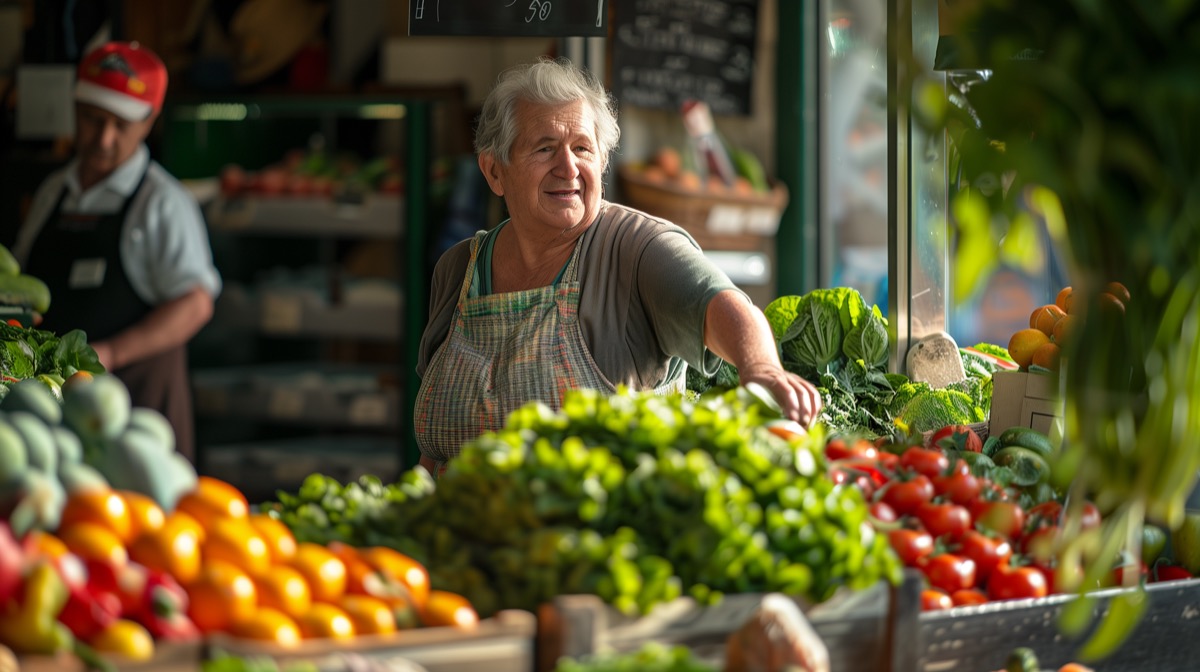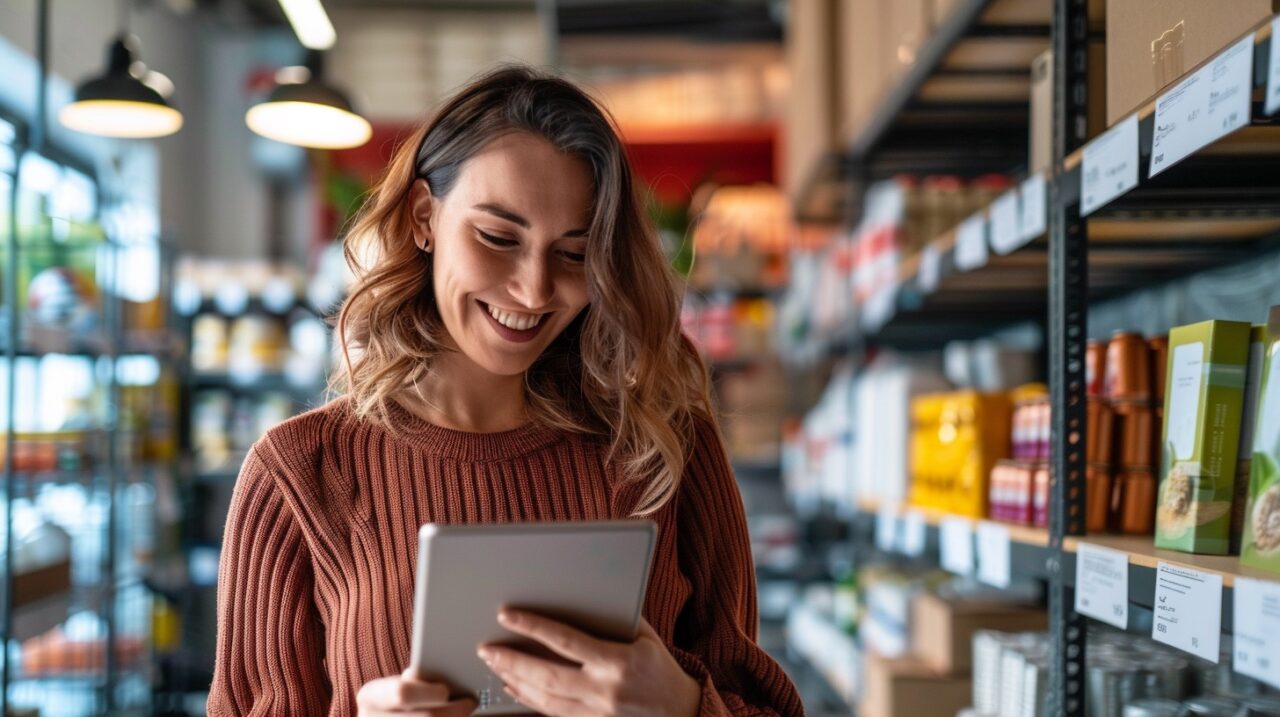Introduction
You’re a local grocery store owner, proudly serving your community with fresh produce and quality products. You’ve built a loyal customer base over the years, but lately, you’ve noticed a shift in shopping habits. More and more people are turning to online platforms for their grocery needs, and you can’t help but wonder if your business is falling behind.
As a digital marketer with years of experience in e-commerce, I’ve seen this scenario play out time and time again. The truth is that the retail landscape is evolving at a rapid pace, and businesses that fail to adapt risk being left in the dust. But here’s the good news: by embracing your own digital sales channel, you can future-proof your grocery store and tap into a world of opportunities.
Think of your online store as a powerful sidekick to your physical shop. Like Robin complements Batman, your e-commerce website can enhance your business’s capabilities and help you reach new heights.
It’s not about replacing your traditional store but rather expanding your reach and providing your customers with a convenient alternative.

In this blog post, we’ll explore how owning a digital sales channel can benefit your grocery store and help you stay ahead of the curve. We’ll dive into the key advantages, backed by compelling statistics and real-world examples, to show you why investing in e-commerce is no longer a luxury but a necessity. So, buckle up and get ready to discover how you can future-proof your business and thrive in the digital age.
Access a Wider Market
So, you’re a local green grocer known for your fresh, crisp vegetables and friendly service. Your regular customers love stopping by your store, exchanging smiles and small talk as they hand-pick their favourite produce. But what about those potential customers who live just a little too far away or have busy schedules that make it difficult to visit your store in person?
This is where having an online store can be a game-changer. By setting up a digital sales channel, you suddenly have the power to reach customers beyond your local geographical limits. It’s like having a magic carpet that can transport your products to doorsteps far and wide.
Don’t just take my word for it; the numbers speak for themselves. According to a 2022 report by Australia Post, online shopping grew by a whopping 17.5% year-on-year in Australia, with over 80% of households shopping online. That’s a massive untapped market waiting to discover your unique products.

And it’s not just in Australia; the trend is global. A 2022 study by the Census Bureau of the Department of Commerce found that e-commerce sales accounted for 14.3% of total retail sales in the US. That’s a significant slice of the pie you could miss out on if you still need an online presence.
But the benefits continue beyond there. A 2021 report by McKinsey & Company revealed that 60-70% of Australian consumers who started shopping online during the pandemic intend to continue doing so. This highlights the long-term potential of online stores and the importance of establishing your own digital sales channel – AKA your ecommerce website.
Imagine being able to serve customers who have moved away from your local area but still crave your unique products. Or, picture attracting new customers who stumble upon your online store while searching for the perfect ingredients for their next meal. The possibilities are endless when you expand your reach through e-commerce.
Tailored Promotions
Now, let’s talk about one of the most exciting aspects of owning a digital sales channel: the ability to create tailored promotions that cater to the unique preferences of your online shoppers.

Imagine you’re a specialty cheese shop known for your exquisite selection of artisanal cheeses from around the world. In your physical store, you might offer samples and in-person recommendations to help customers discover new flavours. But with an online store, you can take this personalisation to a whole new level.
Let’s say, a customer lands on your website and starts browsing your selection of cheeses. Based on their previous purchases and browsing history, you can offer them personalised recommendations, guiding them towards cheeses they’re most likely to enjoy. It’s like having a virtual cheesemonger at their fingertips, anticipating their needs and desires.
The power of personalisation cannot be overstated. Forbes reports that 91% of consumers prefer shopping with brands that offer relevant offers and recommendations, and 80% are more inclined to make a purchase from a brand that delivers personalised experiences. By leveraging the data you collect from your online store, you can create targeted promotions that speak directly to your customers’ interests.
Imagine sending a personalised email to a customer who recently purchased a bold, tangy blue cheese, suggesting a complementary fig spread or crackers that pair perfectly with their new favourite. Or imagine offering a special discount on a cheese-of-the-month subscription to your most loyal online shoppers. These tailored promotions make your customers feel valued and understood, drive sales, and encourage repeat business.
And it’s not just about the offers themselves; it’s about the entire shopping experience. A 2022 report by Salesforce found that 73% of US consumers expect personalised experiences from retailers, and 53% are more likely to purchase from brands that offer tailored promotions. Creating a seamless, customised online shopping journey shows your customers that you care about their needs and preferences.
Think of your online store as a blank canvas waiting for you to paint a picture that resonates with each customer. With the power of personalisation at your fingertips, you can create an online shopping experience that feels as warm and inviting as your physical store while still offering the convenience and flexibility that today’s consumers crave.
Increased Engagement and Sales
Now that we’ve explored the benefits of tailored promotions, let’s explore how personalisation can increase engagement and sales for your online grocery store.
Imagine you’re a specialty tea shop known for your wide selection of loose-leaf teas from around the globe. You’ve recently launched an online store to complement your physical location, and you’re eager to connect with your customers in new and exciting ways.

Personalised email campaigns are one of the most effective tools in your digital marketing arsenal. By segmenting your email list based on customer preferences and behaviours, you can create targeted messages that resonate with each recipient. It’s like sending a handwritten note to a friend tailored to their interests and needs.
The impact of personalised email campaigns is astounding. According to Campaign Monitor, 74% of marketers reported that targeted personalisations boost customer engagement, and they observed an average sales increase of 20% when using personalised experiences. That’s a significant boost to your bottom line, all thanks to the power of personalisation.
Roleplay
A customer signs up for your email list after purchasing a delightful jasmine green tea from your online store. A few days later, they receive a personalised email thanking them for their purchase and suggesting a few other green teas they might enjoy based on their previous selection. The email also includes a refreshing iced tea recipe showcasing the flavours of their new favourite blend. Delighted by the personal touch, the customer feels a stronger connection to your brand and is likelier to make a repeat purchase.
But the benefits of personalisation continue beyond there. Imagine creating automated email campaigns that guide customers through their tea discovery journey. For example, you could send new subscribers a “Welcome to the World of Tea” series, highlighting different tea categories and offering steeping tips for each variety. Or, you could create a “Tea of the Month” campaign, showcasing a new and exciting blend each month and encouraging customers to expand their tea horizons.
By leveraging the power of personalised email campaigns, you’re not just selling tea; you’re building relationships with your customers. You’re showing them that you understand their unique preferences and are invested in helping them discover new favourites. And as a result, you’re fostering a sense of loyalty and engagement that translates into increased sales and long-term customer retention.
Higher Conversion Rates
Now that we’ve seen how personalised email campaigns can boost engagement and sales, let’s explore another key benefit of personalisation: higher conversion rates.
Imagine you’re a small-batch artisanal jam maker known for your creative flavour combinations and commitment to using local, organic ingredients. You’ve recently expanded your business by launching an online store and looking for ways to turn casual browsers into dedicated customers.
One of the most powerful tools at your disposal is personalised email marketing. By crafting emails that speak directly to your customers’ interests and needs, you can create a sense of connection and urgency that drives them to take action.
And the numbers don’t lie. According to Campaign Monitor, emails with personalised subject lines are 26% more likely to be opened than generic ones. Simply adding a recipient’s name or referencing their recent purchase can significantly increase the chances of your email being read and engaged with.
But the benefits of personalisation go beyond just open rates. Campaign Monitor also reports that personalised content can lead to a staggering 5.7 times higher revenue compared to non-personalised emails. That’s a huge potential boost to your bottom line, all thanks to the power of tailored messaging.
Roleplay
A customer visits your online store and spends some time browsing your selection of jams, lingering on a few flavours that catch their eye. Later that day, they received an email with the subject line, “We noticed you eyeing our Raspberry Lavender Jam…” The email offers a unique discount code for the flavours they were interested in, valid for 24 hours. Intrigued and feeling valued, the customer clicks through to your site and makes a purchase, taking advantage of the personalised offer.
By leveraging the data you collect from your online store, you can create targeted email campaigns that speak directly to your customers’ interests and motivations. Whether it’s an abandoned cart reminder, a post-purchase follow-up, or a special birthday offer, personalised emails can convert casual shoppers into loyal customers.
Effective Use of Segmentation and Automation
So far, we’ve explored the benefits of personalisation in email marketing, from increased engagement and sales to higher conversion rates. Now, let’s dive into two key strategies that can help you take your personalisation efforts to the next level: segmentation and automation.
Imagine you’re a gourmet popcorn shop known for your inventive flavours and gift baskets. You’ve built a thriving online business but always looking for ways to improve your customer experience and drive more sales.
One of the most effective ways to do this is by segmenting your email list based on customer behaviour and preferences. By dividing your subscribers into smaller, more targeted groups, you can create tailor-made email campaigns for each recipient.
For example, you might create separate segments for customers who have purchased savoury flavours versus those who prefer sweet ones. Or, you might segment your list based on purchase frequency, creating targeted campaigns for your most loyal customers versus those who last purchased a while ago.

By using segmentation, you can ensure that each email you send feels relevant and valuable to the recipient, increasing the likelihood of engagement and conversion. In fact, Mailchimp reports that segmented email campaigns have an average open rate of 14.31% higher than non-segmented campaigns and a click-through rate that’s 100.95% higher. That’s a huge potential boost to your email marketing ROI, all thanks to the power of targeted messaging.
But segmentation is just one piece of the personalisation puzzle. To really improve your email marketing, you need to leverage the power of automation.
Imagine setting up an automated email campaign that triggers a personalised message based on a customer’s actions on your site. For example, if a customer adds a few popcorn flavours to their cart but doesn’t complete the purchase, you could automatically send them a reminder email a few hours later, featuring the items they left behind and offering a small discount to incentivise the sale.
Or, imagine creating a welcome series for new subscribers, automatically sending them emails that introduce them to your brand, showcase your best-selling flavours, and offer a unique discount code for their first purchase.
Using automation tools to send personalised messages based on user behaviour can create a sense of serendipity and relevance that feels almost magical to your customers. They’ll feel like you’re reading their minds, anticipating their needs and desires at every turn.
And the best part? Automated email campaigns are incredibly effective. According to Epsilon, automated email messages generate a 70.5% higher open rate and a 152% higher click-through rate than generic email newsletters. That’s a huge potential boost to your email marketing performance, all thanks to the power of personalisation and automation.
Conclusion
Throughout this blog post, we’ve explored the many benefits of owning a digital sales channel for your grocery store or food-based business. From expanding your reach and accessing new markets to creating personalised promotions and increasing engagement and sales, an online store can be a powerful tool for future-proofing your business.
We’ve seen how personalised email campaigns can lead to higher open rates, click-through rates, and revenue and how segmentation and automation can help you take your personalisation efforts to the next level.

But perhaps the most important takeaway is this: in today’s digital age, online presence is no longer optional. Consumers expect to be able to shop online, and businesses that fail to adapt risk being left behind.
So, if you haven’t already, now is the time to start planning your e-commerce strategy. Whether you’re a local greengrocer, a specialty cheese shop, or a gourmet popcorn maker, an online store can help you reach new customers, build stronger relationships with existing ones, and ultimately grow your business.
But don’t just take our word for it. We want to hear from you! What’s your experience with online sales and personalisation? What strategies have worked well for your business, and what challenges have you faced?
Share your thoughts and experiences in the comments below, and let’s start a conversation about the future of food-based e-commerce. We can learn from each other, share best practices, and navigate this exciting new landscape confidently and successfully.
If you’re ready to take the next step and start building your own digital sales channel, don’t hesitate to contact us. Our team of experienced e-commerce professionals is here to help you every step of the way, from strategy and design to implementation and optimisation.
So what are you waiting for? Your business’s future is online, and the time to start building your digital sales channel is now. Let’s work together to future-proof your grocery store and take your business to the next level!

Leave a Reply